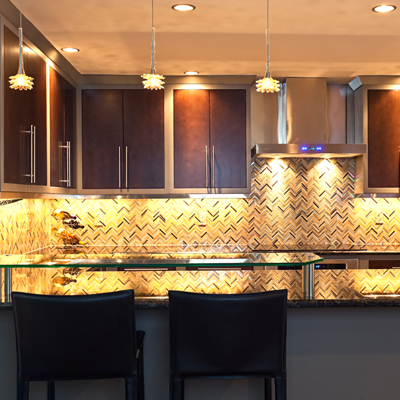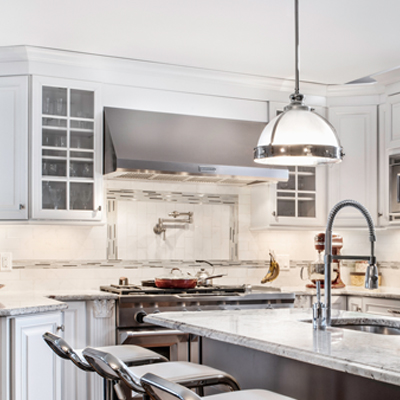UL Listed 24V LED Strip Light Source

Our Professional Grade Line of LED Strips is designed with professionals in mind. 24V allows for easier wiring (smaller gauge) and the ability to wire LED in longer runs. All of our 24V Professional Grade LED Strips are UL-Listed for added trust. These LED Strips have CRI>90, with accurate and consistent color temperature ratings (CCT). These LED Strips are a specification (architectural) grade linear LED strip lighting solution. Please refer to our guide below the products for added assistance in selecting your 24V Professional Grade LED Strips
SELECTING A WHITE LED STRIP
Advancements in LED technology have given way to what was formerly impossible: a high-quality source of consistent white color LED lighting. Today, phosphor coating on LEDs allows commercial-grade white LED strips to give accurate and desirable color temperatures (CCT) that have the ability to render colors well. The universal method for measuring color temperature is the CRI scale, where 100 is the best (sunlight). While CRI is mostly adequate, modern methods of measurement (CQI) can give us an even better picture of a white light’s ability to render color. Our commercial LED strips all have a CRI of over 90.
For ultra-high-performance white LED strips, see our selection of Designer LED Strips (CRI>95, high R9-R13 values).
There are two main considerations when selecting a white LED strip:
- Brightness/Intensity (measured in lumens/foot)
- Color Temperature (measured in Kelvin)
Brightness/Intensity
Although the desired intensity or brightness of a light source for a space is a very subjective parameter, experts and lighting designers have come up with some general formulas to assist customers in making a decision on the type of lights to purchase for their applications.
In general, 15-20 lumens is desired for adequate lighting per square foot. The following is a breakdown of the most common applications for linear LED lighting and the agreed upon intensity (brightness) that is required to adequately light the space.
- Ambient/Accent Linear LED Lighting: 100-200 lumens/ft
- Linear Cabinet LED Lighting: 150-250 lumens/ft
- Linear Task LED Lighting: 200-400 lumens/ft
- Linear Cove LED Lighting: 200-500 lumens/ft
- Linear High-Output LED Lighting: 400-1000 lumens/ft
**Light Intensity can always be adjusted with a dimmer (w/ use of a dimmable LED driver). It is advisable to use brighter lights than needed in conjunction with a dimmer.
Color Temperature (CCT)
CCT, or correlated color temperature, is a measure (in Kelvin) of a white light’s perceived color. Warmer (lower) color temperatures give off a more "yellow" light color while higher color temperatures give off a "cooler" and bluer light color. The following chart should assist you in making a selection on color temperature.
 Amber White - 2200K
Amber White - 2200K
Best used in: Classic, Traditional Design schemes, very soft and inviting lighting. Accents reds, yellows and oranges, can diminish blues and cooler colors. Patio Lighting, Landscape lighting, beach lighting, walk way LED linear Lighting. LED Landscape Lighting, Linear LED Outdoor Lighting, Linear Amber LED Lighting
 Warm White - 3000K
Warm White - 3000K
Best used in: Classic and Traditional design schemes, not as warm and "amber" as 2200K, our most poipular color temperature. LED Cabinet Lighting, LED Kitchen Lighting, LED Dining Room Lighting, Warm Linear LED Lighting
 Natural White - 4500K
Natural White - 4500K
Best used in: Any design scheme. Natural white is the most neutral color temperature. Accents all colors evenly. Natural Linear LED lighting, Natural White LED Strip Lighting
 Bright White - 6000K
Bright White - 6000K
Best used in: Modern and contemporary design schemes. Design schemes with a lot of white and blue elements. Accents blues and greens, can diminish the appearance of reds, yellows and oranges. (Our high CRI minimizes this effect). Cool LED light strips, Cool LED Strip lighting, LED cool linear lighting
Other Parameters To Consider
Architectural-grade LED strips are designed to be housed in an aluminum channel, profile or extrusion to dissipate heat (maximizes lifetime) and to protect LED strips and components from the elements. When selecting an LED strip and extrusion, channel and profile combination, the following needs to be taken into consideration:
- LED Strip Lighting Density (measured in LED's/M): The higher the density of the LED chips on the LED strip, the more light is diffused on a frosted lens. For smaller LED fixtures, a higher density lighting (120/M+) is needed to diffuse the lights so the fixture can be "dotless" or close to "dotless." Our LED strips range from 30/M (least dense) to 240/M (highest density).
- LED Strip Width: LED strips are available in widths from 5mm to 20mm. When building fixtures, please see the specs of the aluminum channel and the LED strips to make sure they're compatible.
- Power Supply Selection: LED strips need a power supply or transformer. We have them available in dimmable or non-dimmable configurations. Calculate the amount of power you need, multiply that number by 1.2 and select a transformer that can power that figure (120 percent of the needed wattage).
